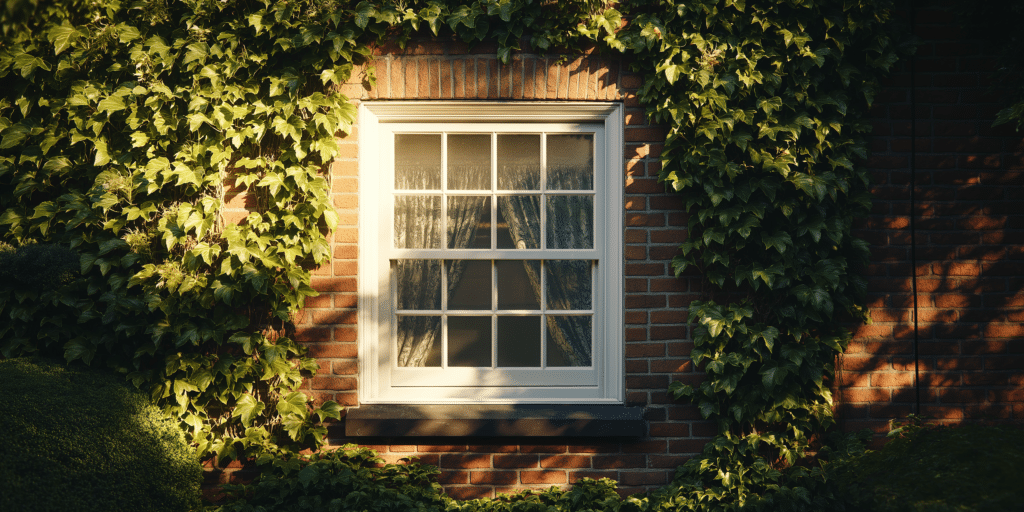What Are Sash Spring Bolts?

Sash spring bolts are integral to the operation of sash windows, acting as a locking device that secures the sashes in position. They utilise a spring-loaded mechanism that engages with a corresponding catch or recess in the window frame, providing a firm hold. This prevents the sashes from moving unless the bolt is deliberately released. A malfunctioning bolt can lead to a compromised window, making it easier for intruders to gain entry or for the sash to become unstable, potentially causing damage or injury.
- Role in Window Operation: They provide controlled movement and positioning of the sashes, enabling precise adjustment for ventilation or security. For example, in a double-hung sash window, sash spring bolts can lock the lower sash in an open position while keeping the upper sash securely closed, promoting airflow without compromising safety.
- Compatibility with Sash Types: They are versatile enough for various sash window configurations, including single-hung, double-hung, and horizontal sliding designs. This flexibility makes them a preferred choice for both residential and commercial applications.
- Variations in Design: They range from concealed designs that maintain a clean, unobtrusive look to more ornate, visible bolts that can enhance the window’s visual appeal. Each design serves a specific purpose, whether it’s prioritising security, ease of use, or aesthetic integration.
Traditional sash windows relied on a system of cords and weights, but modern systems often use spring bolts for a more streamlined appearance and easier operation.
Historical Significance of Sash Spring Bolts
Sash spring bolts replicate the original hardware used in historical sash windows, maintaining the architectural integrity and period-appropriate appearance of buildings from the Georgian, Victorian, and Edwardian eras. They are crucial for properties listed under heritage protection regulations, where any alterations must preserve the building’s character.
- Evolution of Design: Originally simple iron pins, they developed into sophisticated spring-loaded devices with improved security and functionality. This evolution reflects the need to meet modern safety standards while retaining the aesthetic of historical window designs.
- Regulatory Compliance: When modifying listed properties, compliance with heritage regulations is mandatory. This includes using period-correct hardware and ensuring that any alterations are reversible. Non-compliance can lead to significant fines and may necessitate removing and replacing inappropriate fittings.
When refurbishing sash windows, traditional joinery techniques and materials are crucial for maintaining the building’s historical integrity.
Materials Used in Sash Spring Bolts
Brass, stainless steel, and bronze are the primary materials used due to their durability, corrosion resistance, and ability to complement a range of window styles. Brass offers a traditional look with excellent resistance to wear, stainless steel provides modern appeal and strength, and bronze adds a classic, antique aesthetic suitable for period properties.
- Impact on Longevity: High-quality materials such as stainless steel and brass can withstand harsh environmental conditions and repeated use, reducing the need for frequent replacements. In contrast, inferior materials may rust or degrade quickly, compromising the window’s appearance and functionality.
- Aesthetic Considerations: The finish of the sash spring bolt—whether polished, antique, or matte—can significantly impact the visual appeal of the window. Choosing a finish that matches other hardware, such as sash lifts or locks, ensures a cohesive design.
- Environmental Impact: Some manufacturers offer products made from recycled materials or employ sustainable production processes. Opting for such products can reduce the environmental footprint of your window hardware without sacrificing quality or performance.
Using high-quality materials for sash window components, including spring bolts, ensures the longevity and performance of the windows, reducing the need for frequent repairs.
Installation Process of Sash Spring Bolts

Begin by accurately measuring the placement of the bolt on the sash. Mark the locations for the bolt and catch, ensuring they align perfectly. Drill pilot holes to avoid splitting the wood, then secure the bolt with screws. A drill, screwdriver, measuring tape and a level are essential to ensure precise installation.
- Common Mistakes: Misalignment is a frequent issue that can lead to improper locking, making the window challenging to operate or reducing its security. Double-check measurements and use a level to ensure the bolt and catch are aligned horizontally and vertically.
- Safety Precautions: Always wear safety glasses to protect your eyes from debris, and use caution when handling tools. Ensure the window sash is supported to prevent accidental movement or closure, which could cause injury.
- Professional vs. DIY Installation: While installing sash spring bolts is manageable for experienced DIY enthusiasts, professional installation is recommended for those unfamiliar with window hardware or when working with valuable period windows to avoid potential damage and ensure a flawless finish.
Precision is key when installing sash spring bolts. Any misalignment can compromise the window’s functionality and security, so we recommend consulting a professional if you’re unsure.
Common Issues and Troubleshooting
Over time, screws can loosen due to vibrations or changes in temperature. Tightening the screws and applying a thread-locking compound can help secure them. This is especially common in older properties where the window frames may have experienced some movement or warping.
- Jamming or Sticking: Dirt, debris, or rust can accumulate and obstruct the bolt mechanism. Cleaning the bolt with a mild solvent and applying a lubricant like graphite powder can restore smooth operation. Regular maintenance, such as cleaning and lubrication, can prevent these issues.
- Replacement Needs: If the bolt or its housing is severely corroded, bent, or broken, replacement is the best option to ensure continued security and ease of use. Many hardware suppliers and online retailers specialise in sash window hardware, offering a range of options to suit different styles and requirements.
- Preventive Maintenance Tips: Regular inspections, cleaning, and lubrication are key. Applying a rust-resistant coating can protect against moisture and prolong the life of the bolts. Conducting a full inspection and maintenance routine at least twice a year, preferably at the start of spring and before winter, is advisable.
Regular maintenance of sash spring bolts can prevent costly repairs. A little time spent checking and lubricating the mechanisms goes a long way.
How to Choose the Right Sash Spring Bolts
When selecting sash spring bolts, consider the type of sash window, desired level of security, material, and finish. For example, brass bolts may be preferred for a traditional look, while stainless steel is ideal for modern or coastal environments due to its corrosion resistance.
- Product Comparisons: High-quality brands like Era and Yale offer bolts with enhanced features such as anti-pick mechanisms and rust-resistant coatings. Investing in high-quality hardware ensures better performance and longevity, reducing long-term costs associated with repairs and replacements.
- Price vs. Quality: Premium bolts often come with additional features such as anti-tamper screws and higher-grade materials, which offer better security and durability. Long-term benefits include reduced maintenance needs, enhanced security, and better overall performance.
- User Reviews and Ratings: Reviews provide insights into real-world performance and durability, helping you choose the best product. Websites like Amazon, specialised hardware stores, and forums for period property renovations are excellent sources for genuine user feedback.
Opting for quality sash window hardware pays off in the long run. We always recommend choosing robust, well-reviewed products that match the property’s aesthetic and security needs.
Maintenance and Care for Sash Spring Bolts

Regularly check for signs of rust, loose screws, or jamming. Apply lubricant to keep the bolts moving smoothly and tighten any loose components. A bi-annual maintenance schedule is recommended to ensure the bolts remain in good working condition.
- Cleaning Methods: Wipe down the bolts with a soft cloth and a mild, non-abrasive cleaner. Avoid using harsh chemicals that could damage the finish. Diluted dish soap and water effectively remove dirt without harming the metal.
- Seasonal Care: Changes in temperature and humidity can affect the expansion and contraction of metal components, leading to misalignment or sticking. Inspect the bolts for tightness, apply a fresh coat of lubricant, and check for any signs of rust or corrosion.
- Replacement Protocol: If the bolt is significantly corroded, bent, or otherwise damaged, replacement is necessary. Choose a bolt of the same size and design to match the existing hardware and follow proper installation procedures to maintain the window’s functionality and appearance.
Keeping sash spring bolts clean and lubricated is essential to their longevity. It’s a simple task that greatly affects performance and appearance.
Enhancing Security with Sash Spring Bolts
Sash spring bolts provide an additional layer of security by locking the sashes in place, making it difficult for intruders to force open the window. Some models have enhanced features such as anti-pick mechanisms and reinforced construction to resist tampering.
- Combination with Other Security Features: They can be combined with sash stops, child safety locks, and even smart window sensors to create a comprehensive security system. A combination of sash spring bolts and sash stops is ideal for heritage properties, while modern homes can benefit from integrating these with smart security systems.
- Installing Sash Spring Bolts for Maximum Security: They should be positioned at both the top and bottom of the sash to prevent forced entry from either direction. Using tamper-proof screws and installing the bolts into reinforced sections of the window frame can significantly enhance security.
- Case Studies of Security Enhancements: In several instances, historical properties have used these bolts to upgrade their security without compromising their aesthetic integrity. A restored Victorian home in London successfully integrated sash spring bolts with modern security features, significantly reducing the risk of burglary.
When security is a priority, sash spring bolts are a great addition. They provide a discreet yet effective way to secure sash windows, which is particularly important for older homes.
Sash Spring Bolts in Contemporary Window Design
They offer a blend of traditional aesthetics and modern functionality, maintaining the classic look of sash windows while providing improved usability and security.
- Innovative Features and Technologies: Recent advancements include corrosion-resistant coatings, adjustable tension settings, and integration with electronic security systems. These features enhance durability, user convenience, and security, making them suitable for modern residential and commercial applications.
- Design Flexibility: Custom fabrication options are available, allowing bolts to be tailored in size, finish, and functionality to suit bespoke window projects.
- Compatibility with Energy-Efficient Windows: Sash spring bolts can be integrated into double or triple-glazed sash windows without compromising thermal performance. Properly installed sash spring bolts ensure a tight seal, reducing drafts and maintaining energy efficiency.
The versatility of sash spring bolts allows them to be used in both traditional and contemporary designs without sacrificing aesthetics or performance.
Future Trends in Sash Spring Bolts

There is potential for integrating these bolts with smart home systems, allowing remote monitoring and control via smartphones. Users could receive alerts and lock or unlock their windows remotely by incorporating sensors and electronic locking mechanisms. This innovation would enhance security and convenience, particularly in high-end residential and commercial applications.
- Sustainable Materials and Manufacturing: Manufacturers are exploring sustainable materials like recycled metals and low-impact production techniques to reduce the environmental footprint of these components. This aligns with the growing demand for eco-friendly building materials.
- Advanced Security Features: Anti-drill plates, reinforced mounting systems, and biometric locking options are some of the cutting-edge developments in window security hardware. These features cater to properties that require heightened security without compromising on style.
- Enhanced User Experience: Innovations like soft-close mechanisms, self-lubricating parts, and intuitive locking systems make these bolts easier and more pleasant to use, enhancing functionality and user satisfaction.
As technology advances, we expect to see more features integrated into sash spring bolts, such as smart sensors that can alert homeowners if a window is tampered with.
Final Thoughts on Sash Spring Bolts
Sash spring bolts provide a secure, functional, and aesthetically pleasing solution for sash windows. They balance traditional appeal with modern security and usability features, ensuring that both heritage and contemporary requirements are met, supporting diverse architectural needs.
These bolts are a versatile choice for preserving the character of a listed property or enhancing the security of a new build. Choosing the right sash spring bolts enhances your windows’ functionality and aesthetic value.
For heritage properties, choose historically accurate bolts that comply with preservation standards. For modern homes, prioritise security and ease of use. Regular checks and maintenance are crucial to prolonging the life and performance of sash spring bolts. Even the best-quality hardware requires care to maintain its optimal function and appearance.
Selecting the right sash spring bolts is essential to maintaining both the security and aesthetic integrity of sash windows, whether in heritage or contemporary settings.




